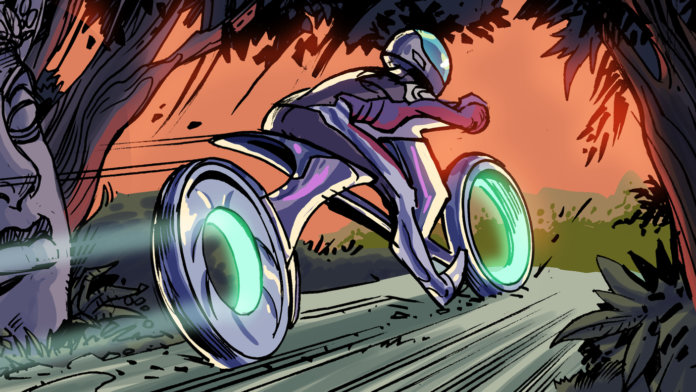“The only constant is change, and the rate of change is increasing.”
–Peter Diamandis
Many of today’s biggest companies will no longer exist in 10 years. Why? Because rapidly emerging new technologies will make the problems they’ve spent their history solving obsolete.
Too often solutions are limited to ideas that can easily be shown to incrementally solve existing business goals. Crazy ideas, projects, or initiatives that don’t fit into the mold get rejected. While this keeps the company focused and efficient, it’s exactly what leads to disruption. Because world-changing ideas are crazy—until they are a massive breakthrough.
Thomas Edison was ridiculed in his quest to make an electric light bulb. The Apple Newton was a spectacular flop, until it evolved into the iPhone. Before these products changed the world, people asked, “Why would we ever want that?!” Today, we can’t imagine living without them.
Massive innovation comes not from solving what we know how to solve but from radical, crazy, forward-thinking ideas. And this is where science fiction can be a powerful innovation tool.
At Singularity University, we’ve developed a special brand of design thinking called Design for Exponentials (D4X) to help us build an exponential mindset and to develop world-changing innovation by constantly shifting perspective. One of the pillars of D4X is learning to project our thinking into the future. Through a methodology called science fiction design intelligence (SciFi D.I.), we leverage science fiction to look 10 to 15 years into the future to redefine what’s possible today.
SciFi D.I. starts with a vision, but it doesn’t stop there. Science fiction is powerful because it brings the future to life. So, we work with talented artists and storytellers to make an actual piece of science fiction too. When we can imagine a future, we can begin to see the path to it.
Why do we think this approach works so well?
SciFi D.I. helps you suspend disbelief.
We start by envisioning life 15 years in the future. It’s far enough out to be hard to predict, yet close enough to be inspired by today. And because it’s in a narrative format, sci-fi gives us permission to take artistic license to reimagine the world we see before us.
SciFi D.I. helps others to suspend disbelief.
Stories are great devices for helping other people imagine a different world. They allow us all to talk about the same future, rather than whatever version of it we each picture in our own minds.
SciFi D.I. establishes what to build today.
We start with our 15-year vision, then retrocast to today to determine what needs to happen between now and then to transform that unreasonable idea into a reasonable one. This process helps us see the partnerships, initiatives, skill sets, and tools we need to start building now.
Here’s how we do it.
Exponential Immersion
The workshop begins with a deep immersion into exponential thinking, technologies, and impact and how they will affect the future. Then we work together with science fiction writers, illustrators, and designers to imagine what the world will look like in 15 years.
Ideation
Then we focus on a topic area and imagine what will be possible in this future. We use this future perspective to ideate future solutions.
Storytelling
Next, we write a future scenario that shows the solution in action in context of the future.
Retrocast
Finally, we retrocast to today and figure out the steps needed to make this unreasonable idea, reasonable. This step helps us identify the skills, partnerships, products, and initiatives we need to start developing right now.
We’ve used this methodology with leaders and entrepreneurs around the world to jumpstart massive, transformational change. This framework provides a structure to discuss and develop irrational ideas. It’s proved incredibly useful in clarifying future roadmaps, objectives, and opportunities to take on big, audacious goals and, especially, to focus attention on solving global grand challenges through exponential technologies.
Movies, TV, and books are the way most people learn about these technologies. Unfortunate, then, that most science fiction predicts a very dour, dark struggle with them that further widens the divide between haves and have nots. Knowing the power of sci-fi to influence science future fact, are these the types of things we want to see created in the future?
To change the world, we have to provide future visions showing it’s possible. We use SciFi D.I. to provide positive future narratives describing a world we want to live in. A world where global grand challenges are solved. Then we leverage these stories to make the impossible, possible.
The Future of Home
In 2015, SU focused SciFi D.I. on the home. We wondered how exponential technologies would redefine the meaning of “home” and how we would be able to address homelessness and nomadic lifestyles around the world. To do this, we invited experts in medicine, construction, appliances, architecture, and the developing world to collaborate with our faculty, designers, science fiction writers, and illustrators for a three-day workshop in Bodega Bay, California.
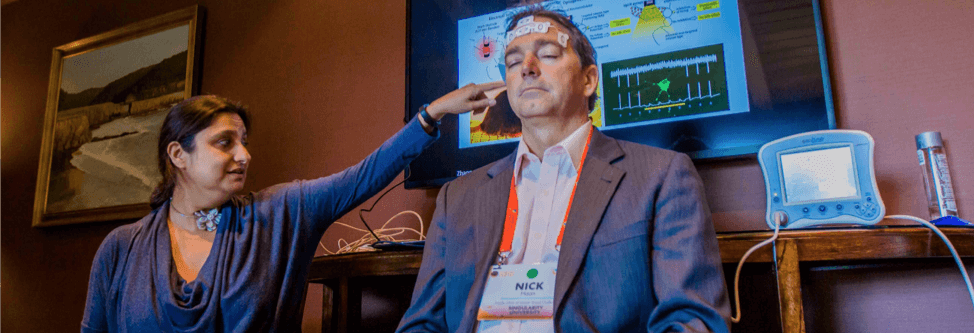
On the first day, we immersed ourselves in conversations and demonstrations of future technologies and the causes of homelessness around the globe. For example, in the above image we see Divya Chander, faculty for neuroscience and medicine at SU, demonstrating how sensors on the outside of the body can provide important information about brain activity. This mix of kinesthetic and lecture-based learning helped give all participants a shared baseline of the opportunities and challenges we face.
Next, we divided into four groups and defined a character that lives in that world. These characters are representational of different socio-economic and geographic demographics. For example, Nia is a young, single mother struggling to provide nutritious food and safe, comfortable shelter for herself and her baby in a dilapidated city in the American Rust Belt. While Tsai is 10 years old, living with sensory implants to help him with autism in the luxurious SkyBurbs of China.
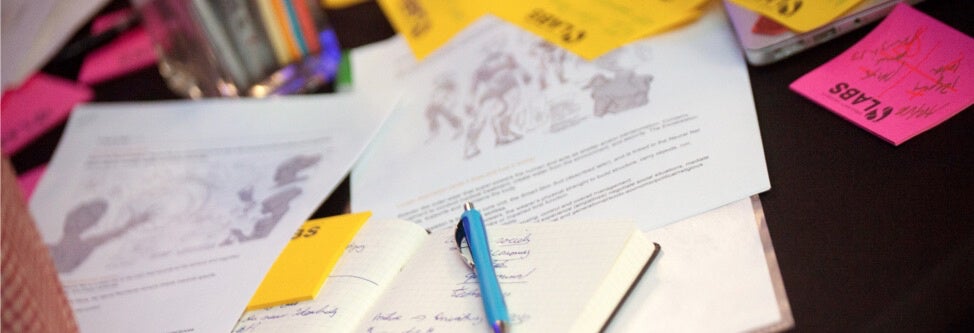
Then we imagined what their everyday lives were like. Where did they sleep? How did they eat? What types of technologies and tools did they use and why? What did they do for work? By answering these benign questions, we began to develop a picture of what it will be like to live in their futures and what their domiciles would need to provide to give them a sense of “home.”
Back in the lab over the next couple months, the SU team continued to develop the ideas. We spent time researching existing science and technology to support the ideas and used our findings to further define the products, services, and stories conceived over the three days.
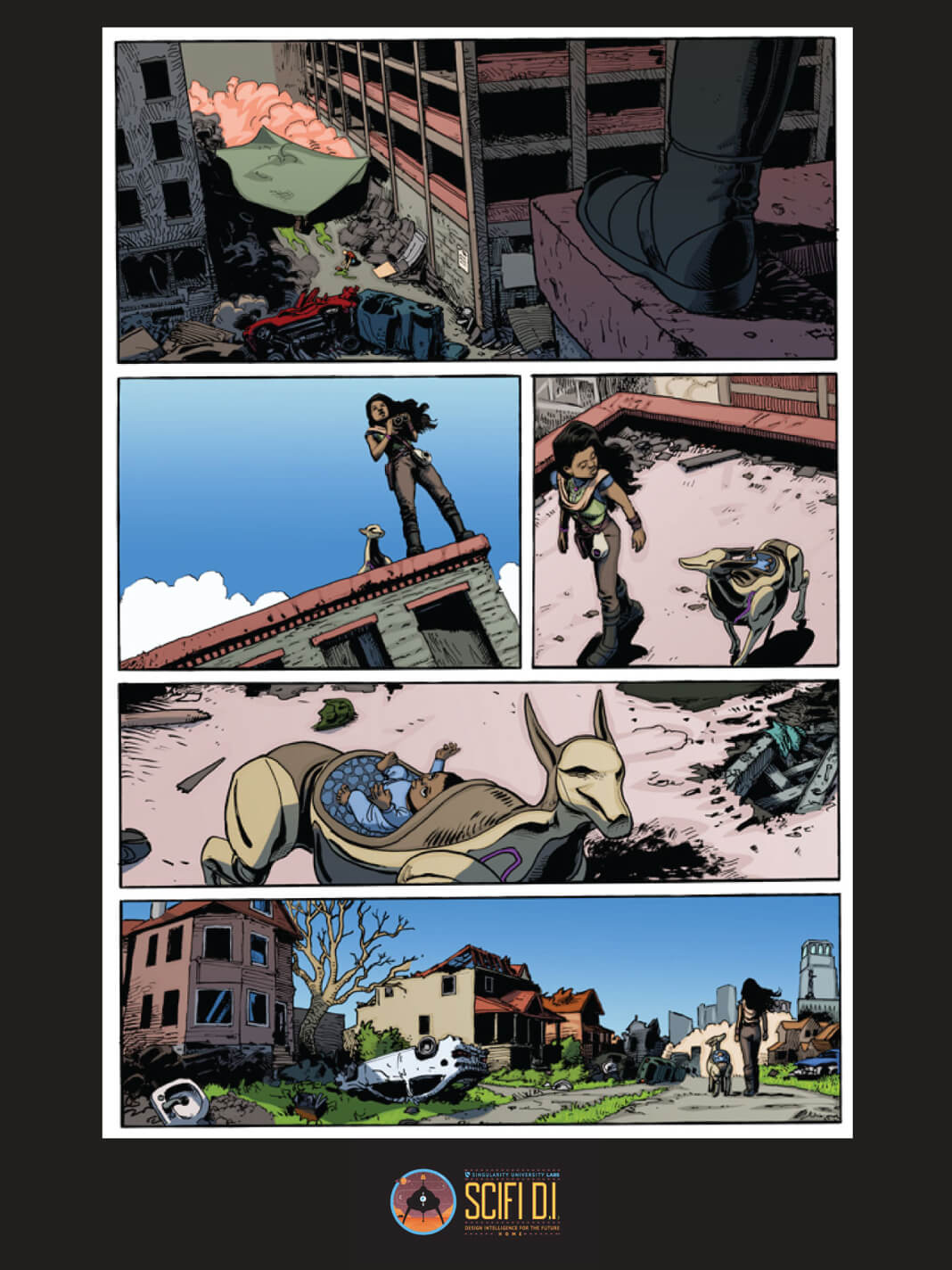
Next, we integrated the ideas and characters into fully rendered comic books based on the frameworks developed in the workshop for each of our four characters. We took great care to ensure the stories illustrated the way people of the future went about solving massive challenges facing humanity today.
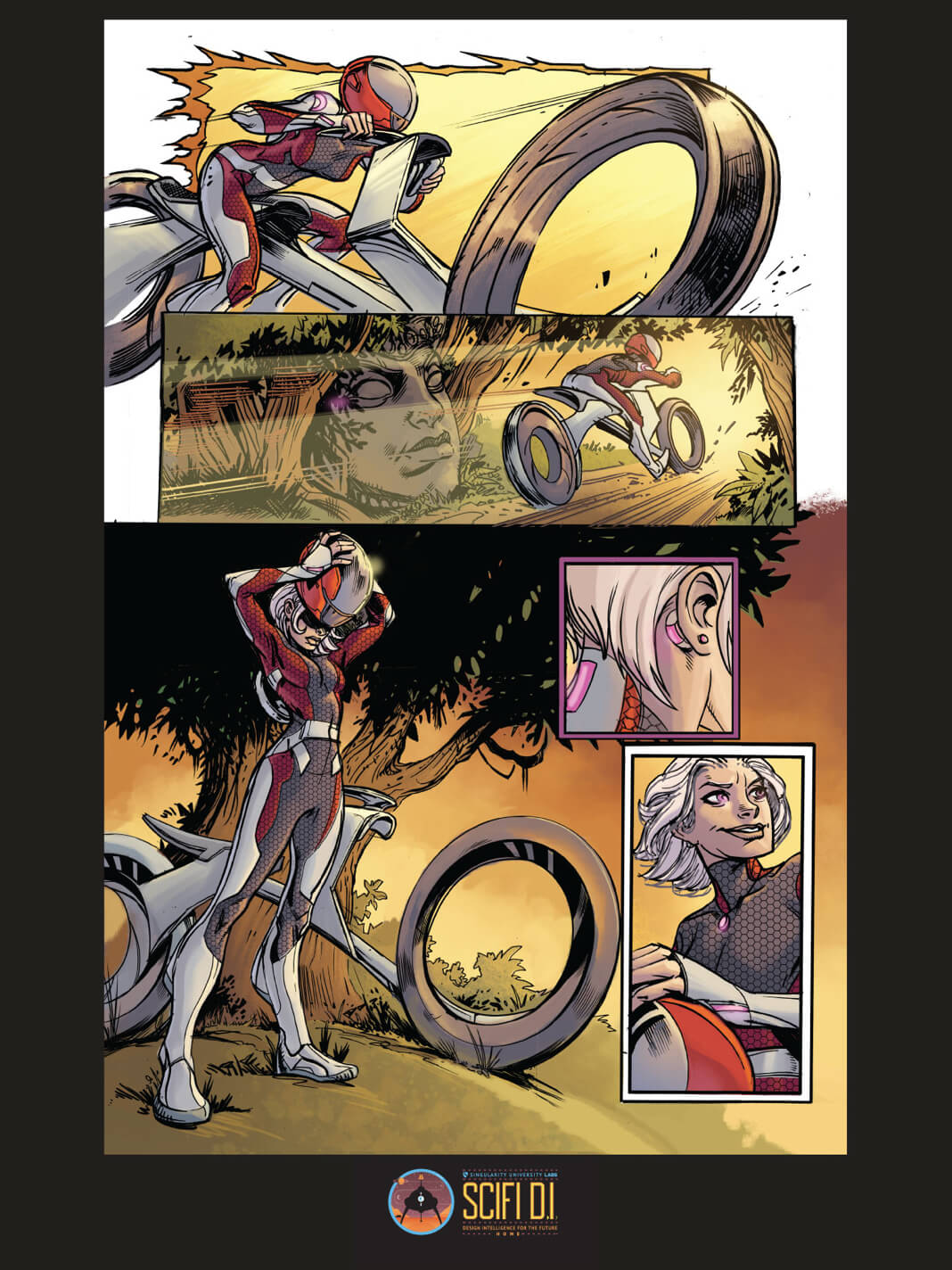
For example, Roda is a 101-year-old nomadic journalist struggling to recover from Alzheimer’s. In her story, we follow her as she takes her home with her all over the globe. We learn about how technological implants in her brain help repair neural connections and memories, enabling her to once again connect with her daughter and granddaughter.
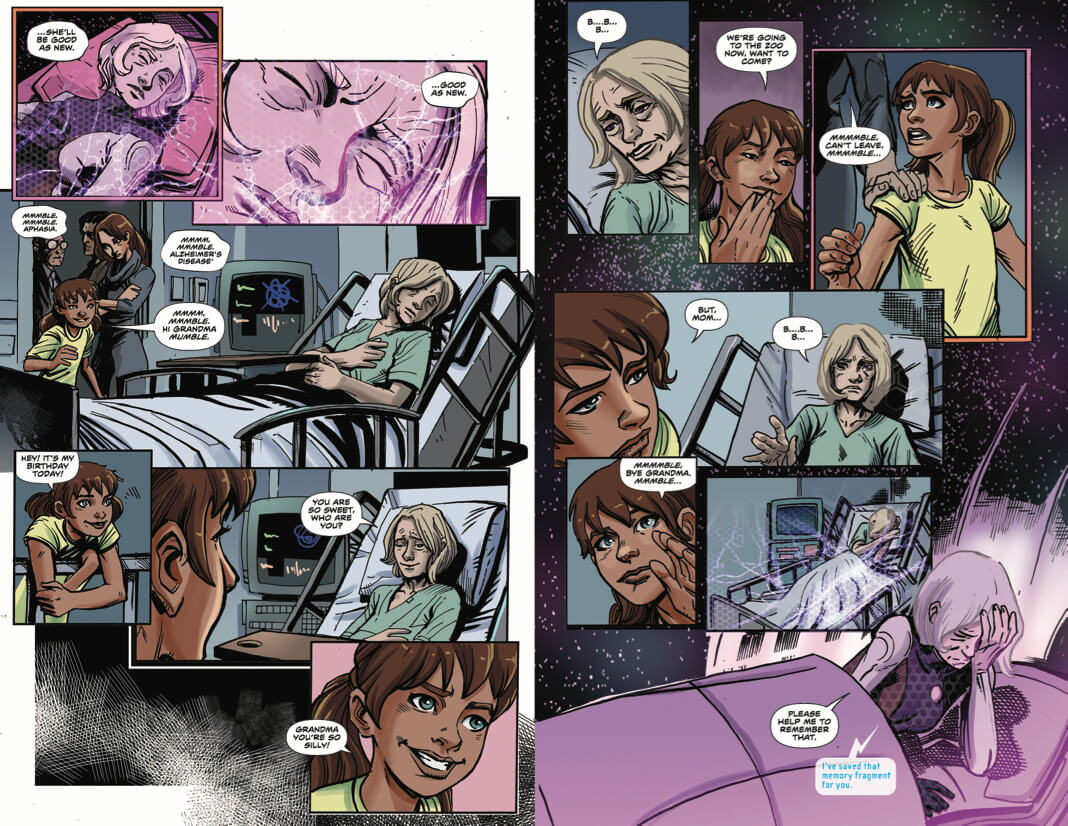
Already, the SciFi D.I. Future of Home stories have provided shared visions to the participants in the sessions. Several have leveraged the stories to start building solutions needed to make these ideas reality by 2030. And others outside the original participants have leveraged the comics to start discussions about the future of home and how technology can be used to solve global grand challenges that directly affect that future.
Later this year, we plan to make the comics publically available, along with more specifics of the methodology and how to use it yourself. We believe it’s a powerful tool for shifting your perspective to amp up innovation from linear to exponential.
What would you use it to reimagine?


